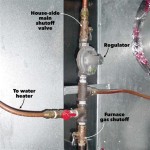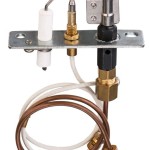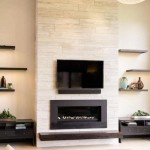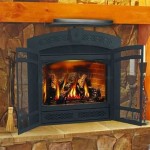Installing a Wood Mantel Shelf Over a Stone Fireplace: A Comprehensive Guide
The combination of a stone fireplace and a wood mantel shelf creates a focal point in any room, blending rustic charm with timeless elegance. However, installing a wood mantel shelf over a stone fireplace requires careful planning and execution to ensure both aesthetic appeal and structural integrity. This article provides a detailed guide to the process, covering the necessary steps for a successful installation.
Prior to commencing the installation, it is essential to thoroughly assess the fireplace and choose a mantel shelf that complements its design and size. The type of stone used, the overall dimensions of the fireplace, and the desired style of the room all influence the selection of the mantel and the chosen installation method. A poorly chosen or improperly installed mantel can detract from the fireplace's visual appeal and, more importantly, pose a safety hazard.
Planning and Preparation
The first crucial step involves meticulous planning. This entails accurately measuring the fireplace, determining the desired height for the mantel shelf, and selecting the appropriate wood for the mantel. The height typically ranges from 48 to 60 inches above the firebox opening, but individual preferences and local building codes should be considered. The width of the mantel should ideally extend slightly beyond the width of the fireplace surround, creating a balanced visual effect.
Wood selection is a critical factor. Hardwoods like oak, maple, and walnut offer durability and aesthetic appeal, while softer woods like pine are more affordable but may require additional treatment for heat resistance. Reclaimed wood provides a rustic charm but may require more preparation. Regardless of the chosen wood, it should be properly seasoned and free from excessive moisture to prevent warping or cracking after installation.
Next, gather all the necessary tools and materials. These include a level, measuring tape, stud finder (if applicable), drill with various drill bits (including masonry bits), hammer drill (if necessary for particularly hard stone), wood screws, construction adhesive, shims, safety glasses, dust mask, and a pencil. Consider purchasing specialized stone anchors or fasteners designed for attaching objects to stone surfaces. These anchors provide a secure hold without damaging the stone.
Before drilling or applying any adhesives, dry-fit the mantel shelf to ensure proper alignment and fit. This step allows for adjustments and identifies any potential issues before committing to the installation. Use shims to precisely level the mantel and address any minor irregularities in the stone surface.
Installation Techniques
Several methods can be used to install a wood mantel shelf over a stone fireplace, each with its own advantages and disadvantages. The chosen method depends on the type of stone, the weight of the mantel, and the desired level of permanence. Some common techniques include: using brackets, directly attaching the mantel to the stone, and employing floating shelf hardware.
Using Brackets: This method involves attaching metal or wooden brackets to the stone using masonry screws and construction adhesive. The mantel shelf is then secured to the brackets. This approach distributes the weight of the mantel and reduces stress on the stone. Select brackets that are aesthetically pleasing and capable of supporting the weight of the mantel and any items placed on it. Ensure the brackets are securely attached to the stone using appropriate anchors and fasteners.
Directly Attaching the Mantel to the Stone: This method involves drilling directly into the stone and attaching the mantel shelf using masonry screws and construction adhesive. This approach requires careful planning and precise drilling to avoid damaging the stone. It is best suited for lighter mantels and softer stone types. Drill pilot holes slightly smaller than the diameter of the screws, and use a hammer drill if necessary to penetrate hard stone. Apply construction adhesive to the back of the mantel and around the screw holes for added stability.
Employing Floating Shelf Hardware: This increasingly popular technique utilizes heavy-duty steel rods that are inserted into pre-drilled holes in both the stone and the mantel shelf. This method creates a clean, minimalist look, as the supporting hardware is hidden within the mantel. Accurate drilling is crucial for this method to ensure proper alignment and a secure fit. The depth and diameter of the holes must be precisely matched to the specifications of the floating shelf hardware. Use a laser level to ensure the holes in the stone are perfectly aligned horizontally and vertically.
When drilling into stone, always use a masonry drill bit and apply steady, even pressure. Avoid excessive force, which can cause the stone to crack or chip. Start with a slow drill speed and gradually increase it as needed. Periodically clear debris from the drill hole to prevent the bit from overheating and becoming dull. If encountering particularly hard stone, consider using a hammer drill to aid penetration.
After drilling, thoroughly clean the holes with a brush or compressed air to remove any dust or debris. This ensures proper adhesion between the fasteners and the stone. Apply construction adhesive liberally to the back of the mantel and around the screw holes before attaching it to the stone. Use shims to fine-tune the alignment and ensure the mantel is perfectly level.
Safety Considerations and Finishing Touches
Safety is paramount throughout the installation process. Always wear safety glasses and a dust mask to protect your eyes and respiratory system from debris. When using power tools, follow the manufacturer's instructions and take necessary precautions to prevent accidents. If working at heights, use a sturdy ladder and ensure it is properly positioned on a level surface. If unsure about any aspect of the installation, consult with a professional contractor or experienced handyman.
In addition to safety, heat management is a critical consideration. While wood mantels provide aesthetic appeal, they must be positioned to comply with local building codes and reduce the risk of fire. Mantels placed too close to the firebox opening can become excessively hot, potentially igniting the wood. Check with local authorities regarding specific clearance requirements for mantels above fireplaces. Consider using a heat shield or non-combustible material behind the mantel to further protect it from heat damage.
Once the mantel is securely installed, the final step involves adding finishing touches. This may include filling any gaps with caulk or wood filler, sanding any rough edges, and applying a sealant or finish to protect the wood from moisture and wear. Choose a finish that complements the existing décor and enhances the natural beauty of the wood. Consider using a fire-resistant finish for added protection. Be sure to select a caulk and filler that are paintable and blend seamlessly with the stone and wood.
A well-installed wood mantel shelf transforms a stone fireplace into a stunning architectural feature. By following these guidelines and taking necessary precautions, individuals can achieve a professional-looking installation that enhances the aesthetics and functionality of their homes. Remember to prioritize safety, carefully plan each step, and use appropriate tools and materials for a long-lasting and visually appealing result.
Regular inspection is essential for maintaining the integrity of the mantel shelf. Periodically check for any signs of loosening, cracking, or warping. Address any issues promptly to prevent further damage and ensure the mantel remains securely attached to the fireplace. Dust the mantel regularly to remove any accumulated debris and preserve its appearance. Avoid placing excessively heavy items on the mantel, as this can strain the supporting hardware and potentially compromise the installation.
The longevity and appearance of the wood mantel shelf depend on proper care and maintenance. Applying a wood conditioner or sealant periodically can help prevent drying and cracking, preserving the wood's natural beauty for years to come. Keep the area around the fireplace clean and free from flammable materials. These small efforts will contribute significantly to the overall safety and aesthetic appeal of the fireplace and mantel.

Fireplace Mantel Installation Before And After

How To Build And Hang A Mantel On Stone Fireplace Shanty 2 Chic

How To Build And Hang A Mantel On Stone Fireplace Shanty 2 Chic

Installing A Wood Mantel On Stone Wall Remodelaholic

How To Install And Decorate A Wooden Fireplace Mantel Vintage Wood Forged Iron

Guide Mantel Installation On A Stone Fireplace

How To Build And Hang A Mantel On Stone Fireplace Shanty 2 Chic

Installing And Making A Floating Mantle For Our Stone Fireplace

Installing And Making A Floating Mantle For Our Stone Fireplace

Fireplace Mantel Installation Before And After
Related Posts








